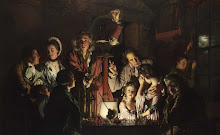A perspective into the world of Baroque
Rembrandt Van Jin, "The Anatomy Lesson of Dr. Nicolaes Tulp", 1632
As I mentioned in my previous blog post, I have a deep appreciation for the Renaissance era, particularly for its magnificent contributions to artwork that conveyed the Catholic religion. The pieces were rich in detail and brimming with references to biblical stories. However, one aspect I didn't appreciate was the often exaggerated proportions of anatomy. While I understand that these distortions were intended to reflect the painter's vision of a scene, I must admit I'm thankful for the Baroque era, which ushered in what I would consider a return to more naturalistic representations in the world of art.
This week, I would like to discuss "The Anatomy Lesson of Dr. Tulp" by Rembrandt van Rijn, commonly known as Rembrandt. This painting exemplifies Rembrandt's mastery as a Dutch artist. It stands as a quintessential Baroque piece, marking a pivotal change in artistic style and inspiring countless artists to reconsider their approach to group portraiture.
At that time, most painters would prepare canvases with generic bodies and simply add the heads of the portrait subjects. Rembrandt, however, was commissioned to paint a portrait for the Surgeons Guild in Amsterdam, a surprising choice given his recent arrival and the presence of more established group portrait artists like Thomas de Keyser and Nicolaes Pickenoy. Despite this, Rembrandt's work resulted in one of the most iconic group portrait paintings of all time.
One aspect I greatly admire about this era is its depiction of real-world situations in artwork. During this time, art was enjoyed by a broad audience, not just royalty and the church. Middle-class Protestants were the primary patrons, and many people had artwork in their homes or businesses. This particular painting illustrates an annual anatomical lesson taught by Dr. Nicolaes Tulp. Notice that Dr. Tulp is the only one wearing a hat, signifying his role as the professor. His students, each displaying a unique expression of intrigue, lean in to get a closer look at what their teacher is demonstrating.
Although some may find the work gory, it served as an advertisement to prospective students considering joining the guild at the time. Think of it as a commercial. This painting sparked interest in the medical field, and artwork depicting anatomically correct bodies and body parts advanced the field further. While other works of the era contributed to incredible inventions like the telescope and microscope, I appreciate the human aspect of this painting. It highlights humankind's thirst for knowledge and the desire to learn ways to sustain and improve our existence.
This painting embodies all the characteristics of Baroque art: the realism of the scene, the contrast between the students, teacher, and the deceased in a confined space, and the dramatic use of light to highlight the body and illuminate the students' faces. The dark background directs focus to the subjects in the foreground. The painting also conveys a sense of motion; the curiosity of the students is palpable. To me, this painting resembles a still life of humans. Although still life typically features inanimate objects, the juxtaposition of life and death evokes a similar contemplative quality.
I must reiterate that while I truly appreciate this style of work, I wouldn't want to hang something like this in my house. I enjoy the effects of light on the subject and the portrayal of movement, but I prefer landscapes. Perhaps someday I'll get a print of a Baroque Dutch landscape. One last point I'd like to mention is Rembrandt's pride in this painting, which is evident from his full signature just above and to the right of the highest person in the painting. Typically, he only used his initials, RHL (Rembrandt Harmenszoon of Leiden).
Click here for a closer look at the painting.
Zygmont, Dr.B. (no date) Rembrandt, The Anatomy Lesson of dr. Tulp (article), Khan Academy. Available at: https://www.khanacademy.org/humanities/renaissance-reformation/baroque-art1/holland/a/rembrandt-the-anatomy-lesson-of-dr-tulp (Accessed: 26 June 2024).
Rembrandt van Rijn the anatomy lesson of dr nicolaes tulp (no date) Mauritshuis. Available at: https://www.mauritshuis.nl/en/our-collection/artworks/146-the-anatomy-lesson-of-dr-nicolaes-tulp/ (Accessed: 26 June 2024).



Comments
Post a Comment